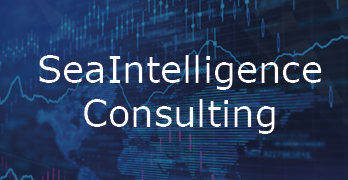Lars Jensen: The timescales of capacity

We are without a doubt in one of the strongest bull-markets for the container carriers in at least the last few decades, with container rates on many trade lanes setting records week after week. But how long will this last?
In order to get a handle on the timescale of when the bull market might end and the shippers see a reversal to some semblance of normality it is necessary to get an understanding of the drivers underneath the current situation.
First of all, it is important to note that the current situation cannot be reduced to just one single factor. Instead it is the confluence of multiple factors which has led the market to the current situation and making matters more complicated these tend to be inter-related.
At heart it is a simple matter of supply and demand.
On the demand side the key driver right now is the extremely large growth in demand with the Transpacific clearly taking the lead with growth rates now in excess of 20% year-on-year, but other trades are seeing increasing growth rates as well. The reason for this sudden and sharp growth is to be found in the impact of the pandemic.
People across the world find themselves in a situation where they cannot spend as much money on a variety of services such as travelling, restaurants and parties as they normally do – just to mention a few examples. Instead they are forced by circumstances to spend more time at home which leads to a shift in spending over into goods – especially bought online. With the hope of a vaccine growing stronger we are likely to see a reversal back into services, but this might be a more slow and gradual transition unfolding over the full course of 2021 and in any case not an element the carriers can control.
On the capacity side the problem is the presence of several bottlenecks. First there is the issue of the vessels themselves. The problem has for a decade been the presence of perpetual overcapacity. This means that when demand grew sharply there was excess capacity which could be deployed. As an example, the Transpacific market is seeing 30% more capacity in December than same time last year. However, there are now de facto no idle vessels left. Hence increasing capacity went from having a timescale measured in weeks to now a timescale measured in years as it would require newbuildings. And as the demand peak is likely temporary, this solution will not help the problem.
Then there is an even more acute capacity problem presently – the lack of empty containers in key locations. There is even anecdotal evidence in the market pointing to the departure of vessels which were not full simply because there were not enough empty containers available to load the goods into. This problem is solvable on a timeframe measured within a couple of months. The solution is a combination of faster return of empties from especially Europe and North America in combination with container factories in China right now working flat out in producing additional containers.
Another issue is the capacity in ports and terminals. The surge in demand and the rapid increase in vessel arrivals strains the capacity both in terms of how many containers can be handled within the port, but also in terms of how many ships can be at berth and be serviced. Additionally, the demand boom leads to larger vessels arriving with more cargo than originally planned – this means longer time spent at berth creating a knock-on effect on subsequent vessels also getting delayed. Expanding port capacity is at best a process measured in a few years. In some locations as much as a decade for major expansion projects.
Hence in terms of how long the current bull market can persist, we can split this into components.
If the demand abates, the problem gets resolved almost immediately. However, the carriers will likely show their resolve and yet again reduce vessel capacity matching the decline which means that the very high spot rates know will come down somewhat and the new surcharges for equipment availability will disappear. But rates are unlikely to collapse.
If demand continues, the acute problem with the equipment is likely to be resolved within a couple of months, setting an end of the current situation to coincide with the lull after Chinese New Year 2021.
As for the crunch on vessel capacity, we have not yet seen the additional solution which is to speed some of the vessels up which would indeed create more capacity. Vessels can in general not sail as fast as they did a decade ago as they have been modified, or built, with fuel optimization in mind – but there is some degree of additional capacity pool left to be activated. It should, however, be kept in mind that would come at a cost. Not just in terms of dollars and cents, but also in terms of a sharp increase in carbon emissions.
About Lars Jensen, CEO, SeaIntelligence Consulting
Lars is a leading expert and thought leader in analyzing global container shipping markets. Lars has 19 years experience hereof the last 9 within multiple companies he has founded, with the main focus as CEO of Seaintelligence Consulting.